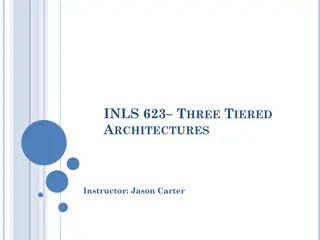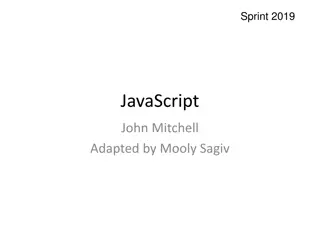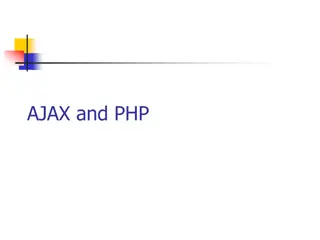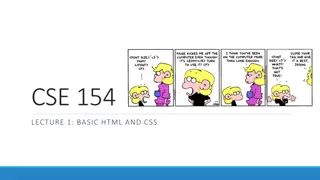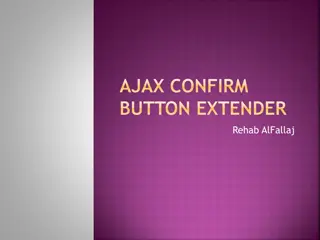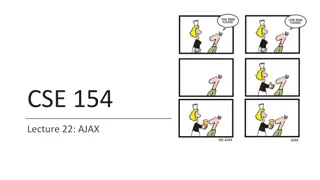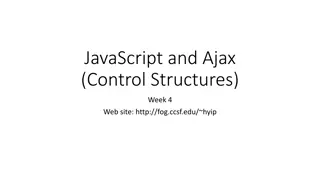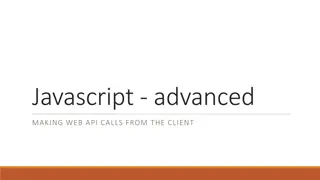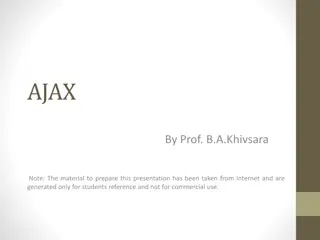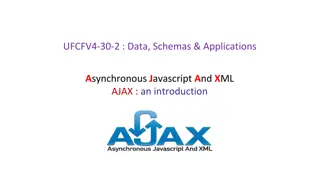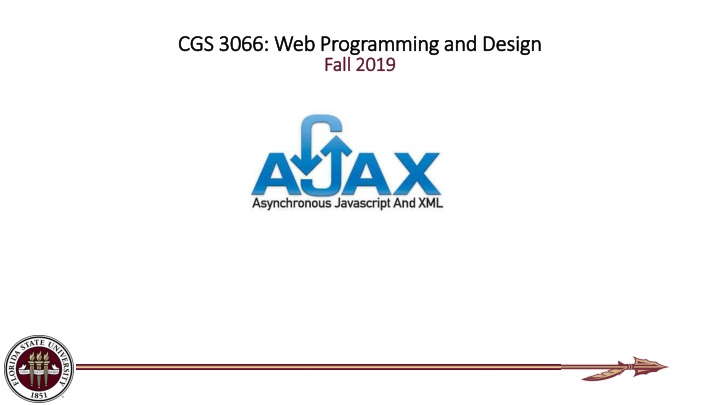
AJAX for Fast and Dynamic Web Development
Learn how AJAX, Asynchronous JavaScript and XML, revolutionizes web development by enabling fast and dynamic web pages that update content without full page reloads. Explore XMLHttpRequest objects, sending requests to servers, and handling GET and POST requests easily.
Download Presentation

Please find below an Image/Link to download the presentation.
The content on the website is provided AS IS for your information and personal use only. It may not be sold, licensed, or shared on other websites without obtaining consent from the author. If you encounter any issues during the download, it is possible that the publisher has removed the file from their server.
You are allowed to download the files provided on this website for personal or commercial use, subject to the condition that they are used lawfully. All files are the property of their respective owners.
The content on the website is provided AS IS for your information and personal use only. It may not be sold, licensed, or shared on other websites without obtaining consent from the author.
E N D
Presentation Transcript
CGS 3066: Web Programming and Design CGS 3066: Web Programming and Design Fall 2019 Fall 2019
AJAX AJAX = Asynchronous JavaScript and XML. A technique for creating fast and dynamic web pages. AJAX allows web pages to be updated asynchronously by exchanging small amounts of data with the server behind the scenes. This means, it is possible to update parts of a web page, without reloading the whole page. Classic web pages, (which do not use AJAX) must reload the entire page if the content should change. Examples of applications using AJAX: Google Maps, Gmail, Youtube, and Facebook tabs.
XMLHttpRequest Object The keystone of AJAX is the XMLHttpRequest object available to Javascript: var xhttp = new XMLHttpRequest(); The XMLHttpRequest object is used to exchange data with a server.
Send a Request To a Server To send a request to a server, we use the open() and send() methods of the XMLHttpRequest object Open(method,url,anync) parameters method: GET or POST url: the server side file/script location async: true for Asynchronous data transfer, false for synchronous xmlhttp.open("GET","ajax_info.txt",true); xmlhttp.send() sends the HttpRequest;
GET request If you want to send information with the GET method, add the information to the URL: xmlhttp.open("GET", server.php?fname=Henry&lname=Ford",true); xmlhttp.send(); http://www.w3schools.com/ajax/ajax_xmlhttprequest_send.asp
POST Requests A simple POST request: xmlhttp.open("POST","demo_post.php",true); xmlhttp.send(); http://www.w3schools.com/ajax/ajax_xmlhttprequest_send.asp
POST Requests To POST data like an HTML form, add an HTTP header with setRequestHeader(). Specify the data you want to send in the send() method: xmlhttp.open("POST", server_filename.txt",true); xmlhttp.setRequestHeader("Content-type","application/x-www-form-urlencoded"); xmlhttp.send("fname=John&lname=Doe"); http://www.w3schools.com/ajax/ajax_xmlhttprequest_send.asp
Server Response To get the response from a server, use the responseText or responseXML property of the XMLHttpRequest object. The responseText property returns the response as a string, and you can use it accordingly: document.getElementById( someDiv").innerHTML=xmlhttp.responseText; http://www.w3schools.com/ajax/ajax_xmlhttprequest_send.asp
The onreadystatechange Event When a request to a server is sent, we want to perform some actions based on the response. The onreadystatechange event is triggered every time the readyState changes. The readyState property holds the status of the XMLHttpRequest.
readyState andstatusAttribute readyState holds the status of the XMLHttpRequest. Changes from 0 to 4: 0: request not initialized (before open()) 1: server connection established (after send()) 2: request received 3: processing request 4: request finished and response is ready statusvalue of 200 denotes a successful request( OK ) Common status values in case of an unsuccessful request: 404: file not found 500: Internal Server Error 503: Service Unavailable
Example var xmlhttp= new XMLHttpRequest(); xmlhttp.onreadystatechange=function() { if (xmlhttp.readyState==4 && xmlhttp.status==200) { alert(xmlhttp.responseText); // perform any DOM manipulation using responseText } } xmlhttp.open("GET", "server.txt", true); xmlhttp.send();
jQuery AJAX $.ajax({ }) .done(function( msg ) { }) .always(function(){ }); method: "POST", url: "some.php", data: { name: "John", location: "Boston" }, dataType: "json" alert( "Data Saved: " + msg ); alert("complete");


